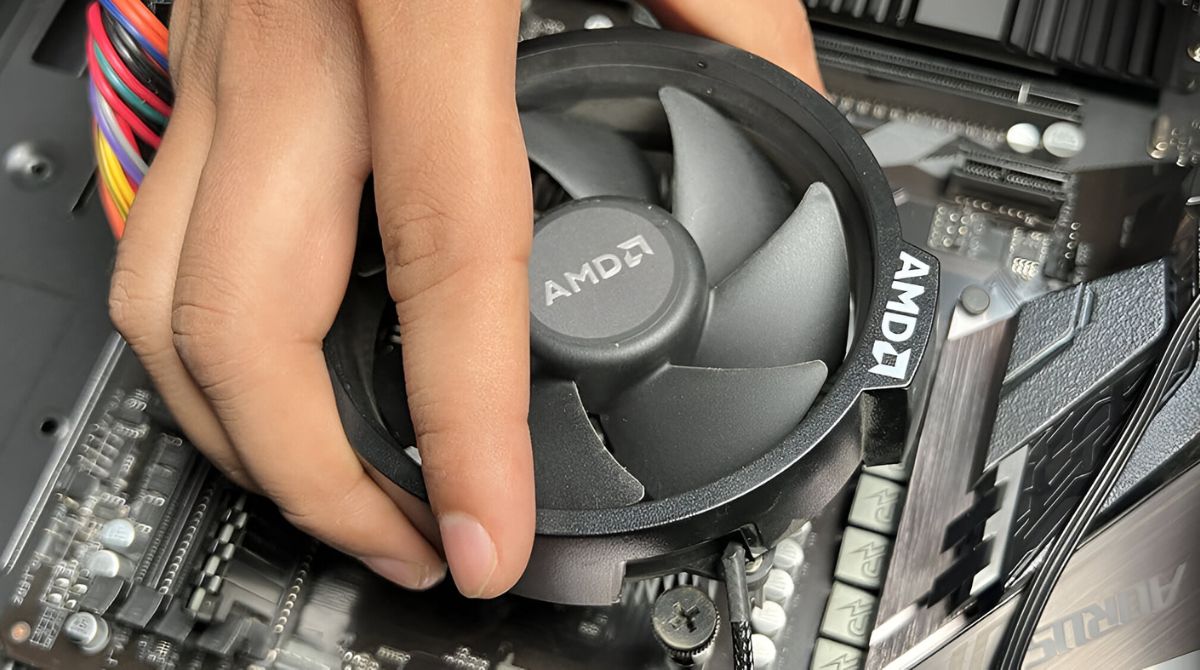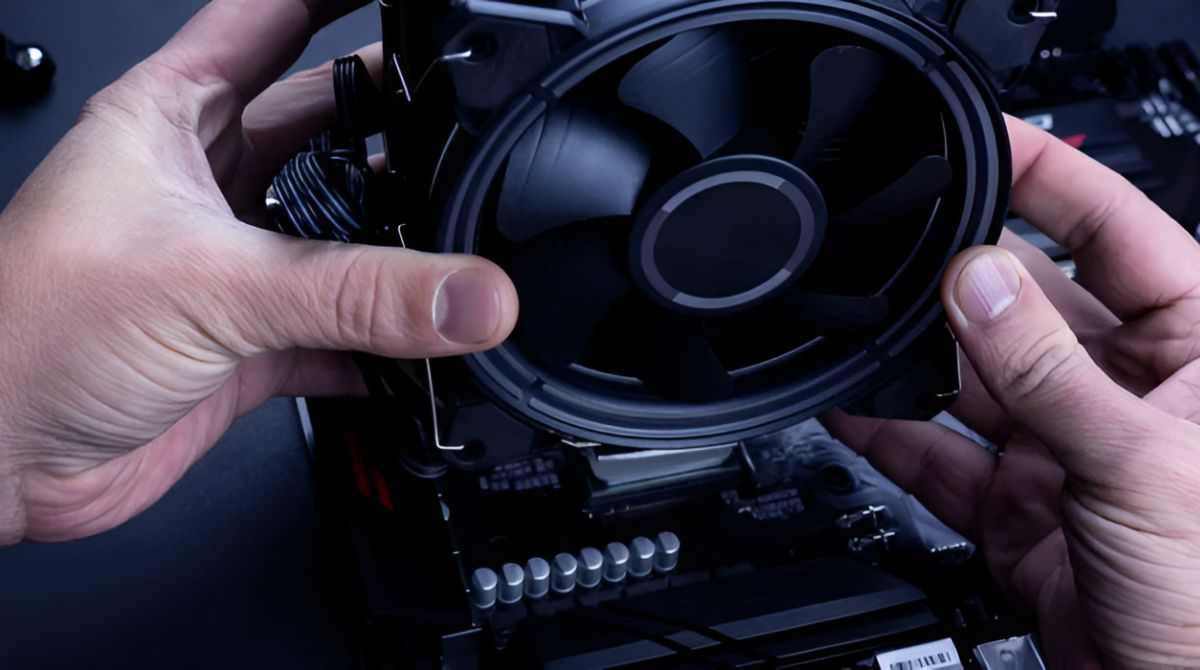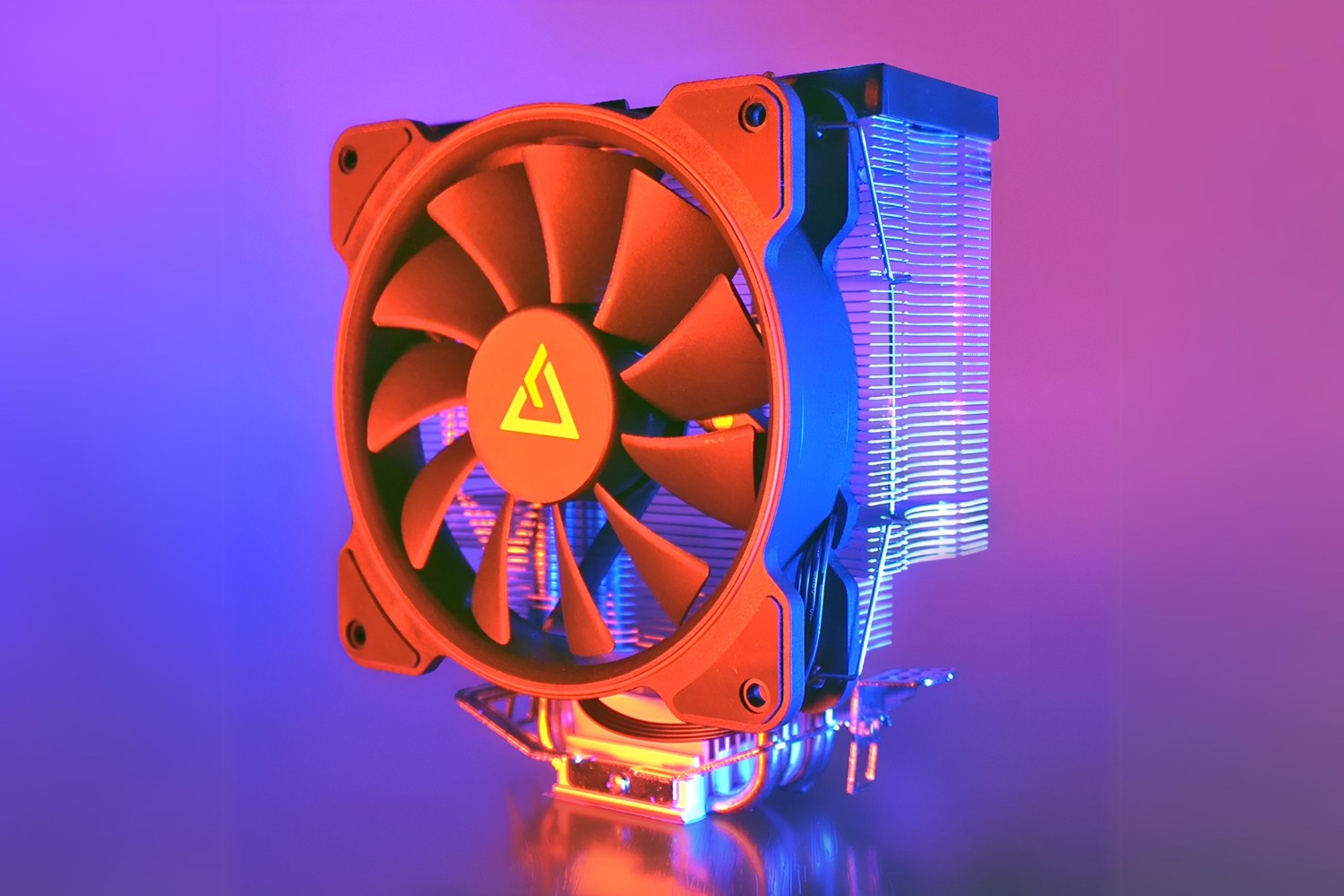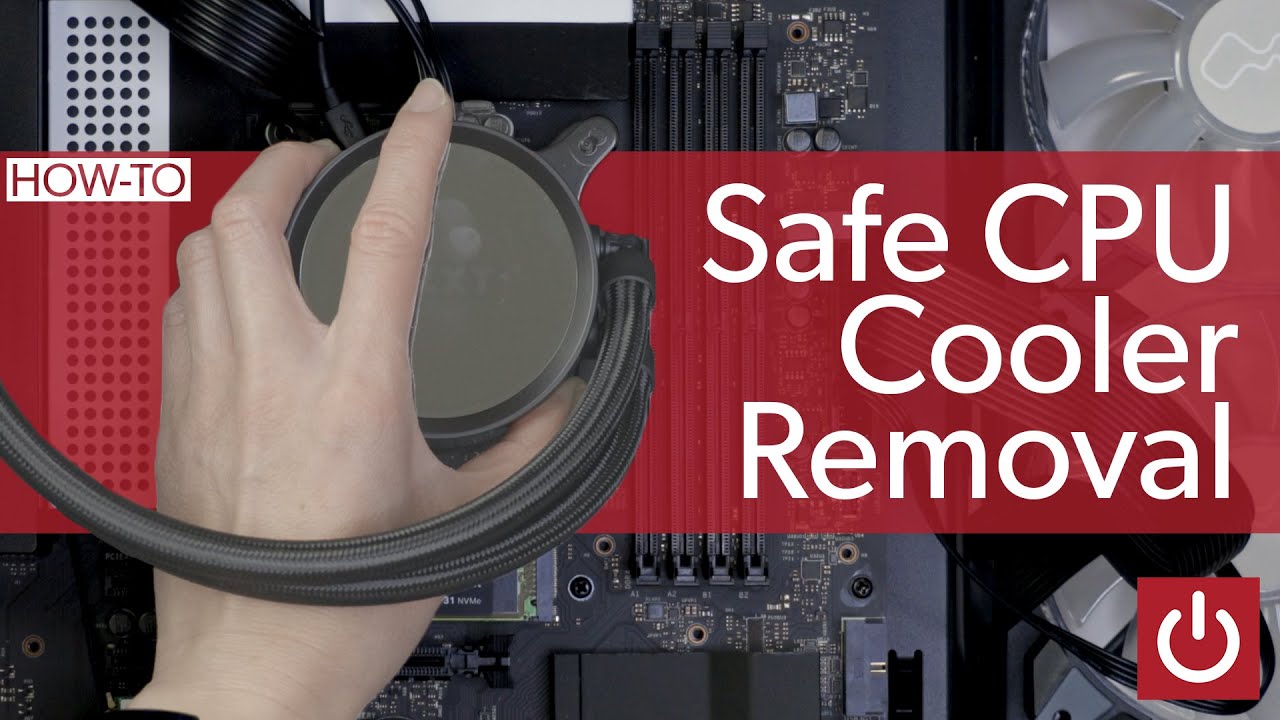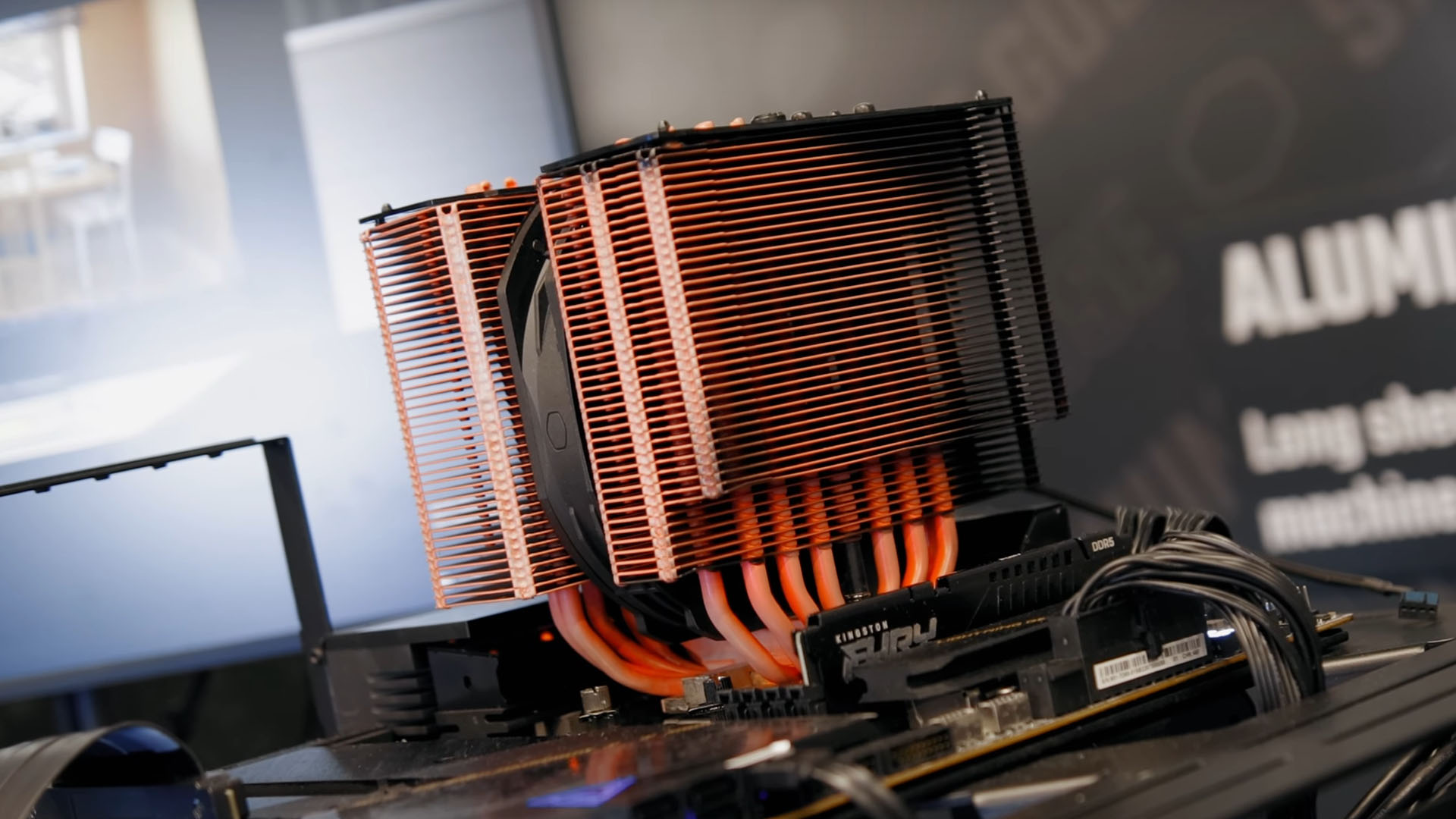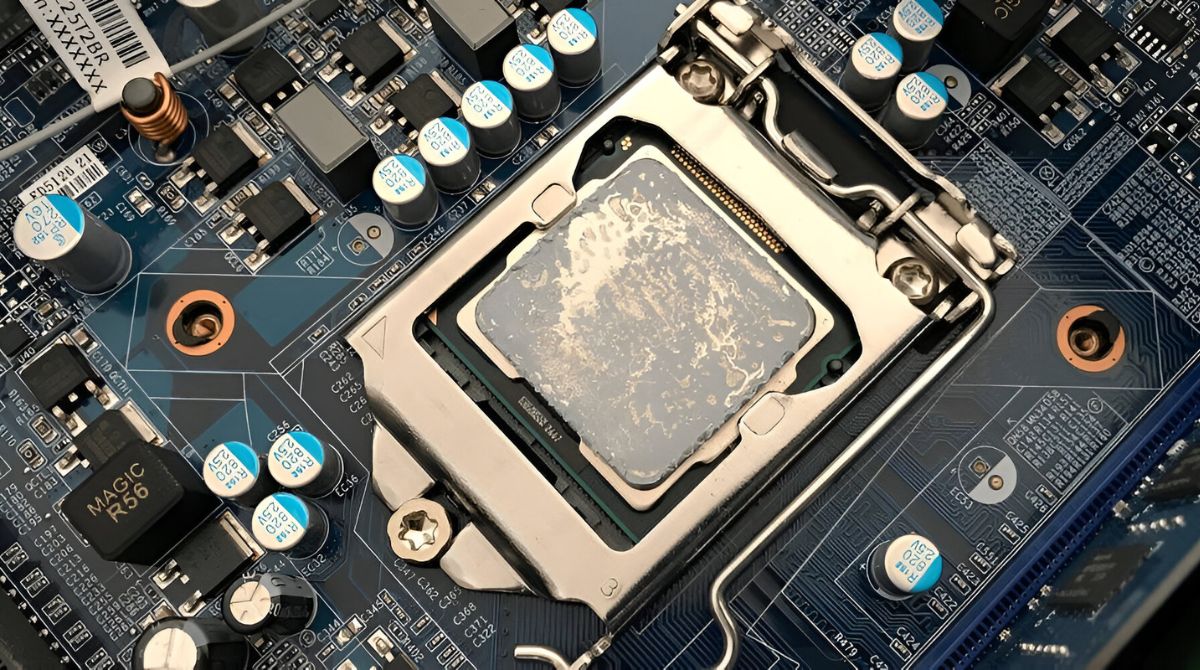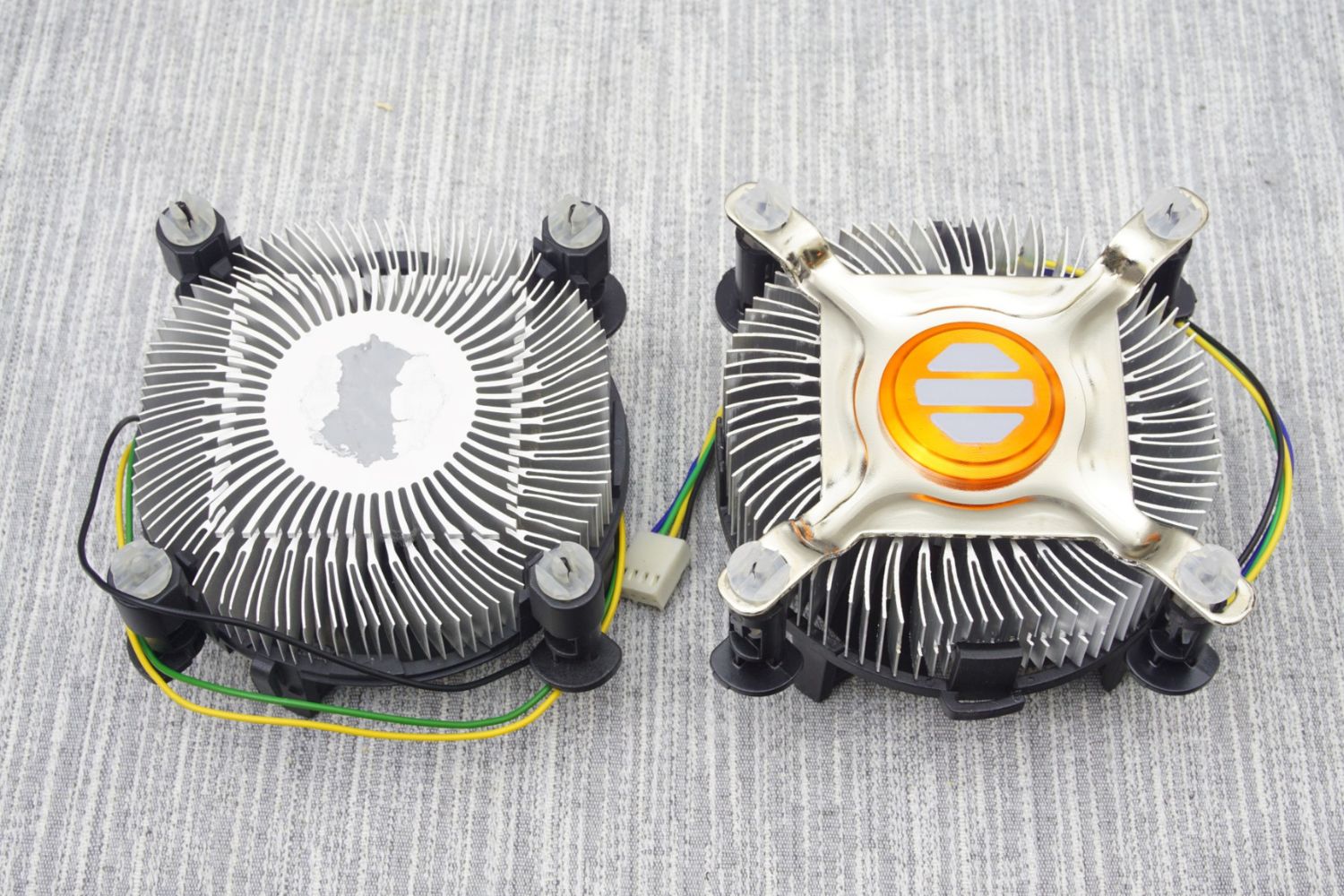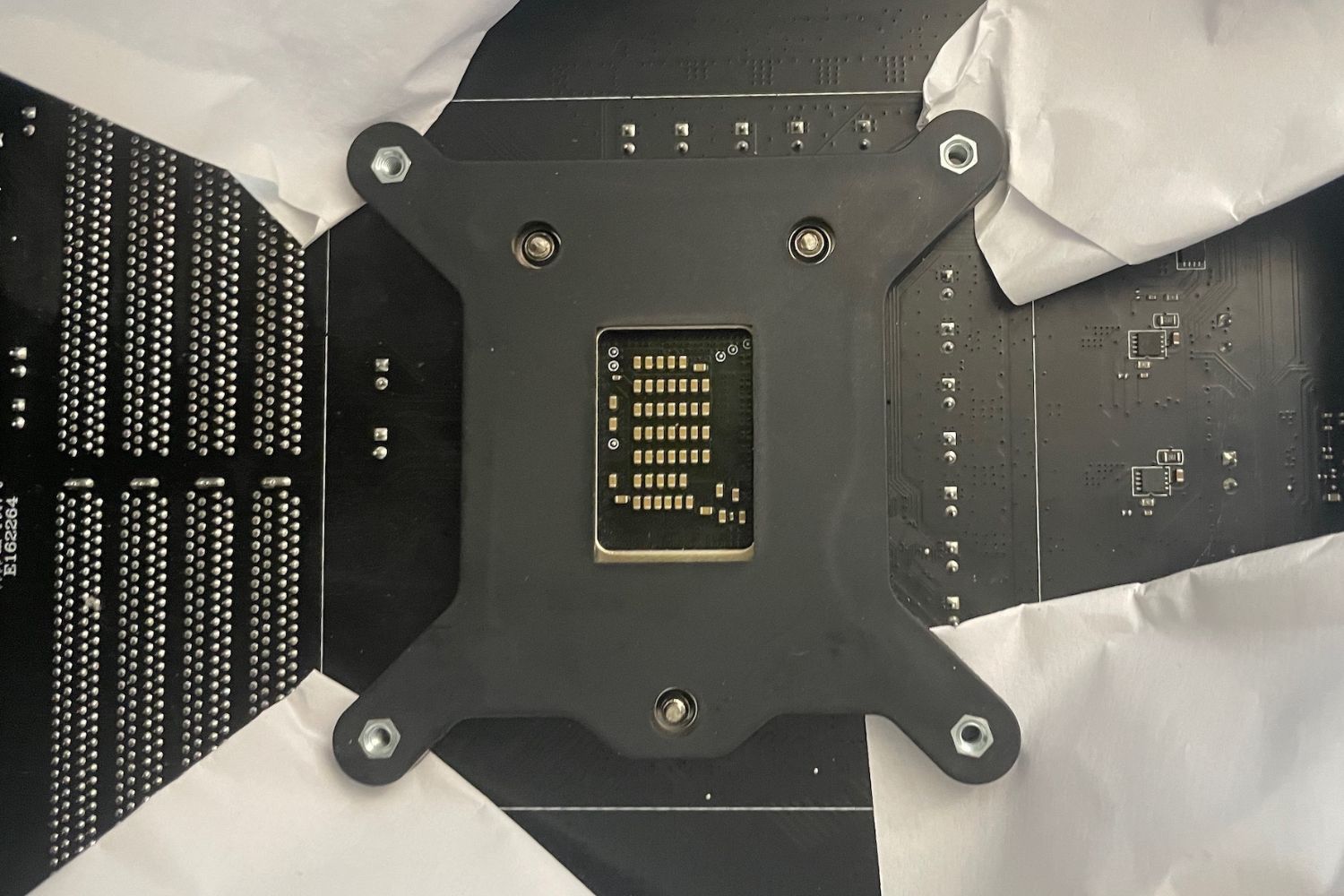Introduction
Welcome to the world of computer hardware! If you’re a tech enthusiast or someone who uses a computer regularly, you may have heard about the importance of a CPU cooler. But what exactly is a CPU cooler, and why is it necessary? In this article, we will explore the role of a CPU cooler and what happens when you remove it.
A CPU cooler, short for Central Processing Unit cooler, is a vital component in a computer system. As the name suggests, its primary function is to keep the CPU cool. The CPU, often referred to as the “brain” of the computer, is responsible for executing instructions and performing calculations. During these actions, the CPU generates a significant amount of heat, which, if not properly managed, can lead to various issues.
Before we delve into the consequences of removing the CPU cooler, let’s understand why the CPU needs to be kept cool in the first place.
When the CPU is in operation, it produces heat as a byproduct of its activities. The more intense the workload, the higher the heat generated. Heat is detrimental to the performance and lifespan of the CPU, as excessive heat can cause a range of problems, including reduced performance, system instability, and even permanent damage to the processor.
Now that we have a basic understanding of what a CPU cooler is and why it is necessary, let’s explore the potential consequences of removing it. It’s important to note that the following scenarios are hypothetical and are meant to emphasize the importance of a CPU cooler. In reality, removing a CPU cooler is not recommended under any circumstances.
What is a CPU Cooler?
A CPU cooler is a hardware component designed to dissipate the heat generated by the CPU during its operation. It consists of a heat sink, which is typically made of metal, and a fan or fans that help to increase airflow and carry away the heat. Some CPU coolers also include additional features such as heat pipes or liquid cooling systems to improve their cooling efficiency.
The primary function of a CPU cooler is to maintain the temperature of the CPU within safe limits. By removing the excess heat, it prevents the CPU from overheating, which can lead to performance issues, instability, or even permanent damage. A CPU cooler is an essential component in any computer system, and its effectiveness directly impacts the overall performance and longevity of the CPU.
CPU coolers come in various forms and sizes to accommodate different types of CPUs and computer cases. The choice of a CPU cooler depends on factors such as the CPU’s power consumption, the level of overclocking (if any), and the desired noise levels. There are air-based coolers that rely on fans to cool the CPU, as well as liquid-based coolers that use a pump to circulate a coolant through a radiator.
Over the years, CPU cooler technology has advanced significantly, resulting in more efficient and quieter cooling solutions. This is particularly important for users who engage in resource-intensive tasks like gaming, video editing, or 3D rendering, where the CPU is under heavy load and generates a significant amount of heat.
While the stock CPU coolers provided with CPUs by manufacturers may be sufficient for basic usage, they are often replaced by aftermarket coolers by users looking for better cooling performance or lower noise levels. Aftermarket CPU coolers offer improved heat dissipation, higher airflow, and overall better cooling capabilities, allowing users to push their CPUs to higher clock speeds without sacrificing stability.
The Role of a CPU Cooler
The role of a CPU cooler in a computer system is critical for maintaining optimal performance and ensuring the longevity of the CPU. It plays a vital role in managing the heat generated by the CPU during its operation.
The CPU, or Central Processing Unit, is the core component responsible for executing instructions and performing calculations in a computer. As it carries out these tasks, it generates a substantial amount of heat. If this heat is not efficiently dissipated, it can lead to various problems that affect the CPU’s performance and overall system stability.
A CPU cooler’s primary function is to draw heat away from the CPU and dissipate it into the surrounding environment. This is achieved through a combination of a heat sink and a fan or fans. The heat sink is typically made of metal, such as aluminum or copper, with a large surface area to maximize heat dissipation. The fan(s) then help to increase airflow across the heat sink, enhancing the cooling process.
By keeping the CPU’s temperature within safe limits, a CPU cooler prevents overheating, which can have severe consequences. If the CPU runs too hot, it can result in reduced performance, as the processor may throttle its clock speed to avoid further heat buildup. This can lead to slower execution of tasks and a noticeable decrease in overall system responsiveness.
Furthermore, excessive heat can cause system instability and unexpected crashes. When the CPU surpasses its temperature threshold, it may trigger a protective mechanism called thermal throttling. Thermal throttling reduces the CPU’s performance to lower the temperature, but it can result in intermittent freezes or system shutdowns.
Another potential consequence of a CPU running too hot is the risk of permanent damage to the processor. Prolonged exposure to high temperatures can cause the CPU’s internal components to degrade or even fail. In extreme cases, this can render the CPU completely unusable, requiring its replacement.
In addition to preventing adverse effects, a CPU cooler can also contribute to a quieter computing experience. By efficiently dissipating heat, the fan(s) in the cooler can operate at lower speeds, resulting in reduced noise levels compared to a system without adequate cooling.
In summary, the role of a CPU cooler is crucial for maintaining optimal performance, stability, and longevity of the CPU. It prevents overheating, reduces the risk of system crashes, and safeguards the CPU from potential permanent damage. A properly functioning CPU cooler is a fundamental component of any computer system, especially for users who engage in demanding tasks that put a heavy load on the CPU.
Heat Generation in a CPU
Heat generation is an inherent characteristic of CPU operation. As the CPU executes instructions and performs calculations, it undergoes various electrical and mechanical processes that result in the production of heat. This heat can be attributed to several factors within the CPU.
One of the primary factors contributing to heat generation in a CPU is the flow of electrical current. The CPU consists of millions, or even billions, of transistors that switch on and off to perform computations. Each transistor transition produces a small amount of heat due to the resistance in the CPU’s circuitry. With millions of transistors operating simultaneously, the cumulative effect is a significant heat output.
Another factor influencing heat generation is the frequency at which the CPU operates. The higher the clock speed (measured in GHz), the more instructions the CPU can execute per second. However, increased clock speed also results in higher heat production. This is because faster clock speeds require higher voltages and more frequent transistor switching, both of which contribute to increased heat output.
The workload or level of utilization also affects the amount of heat generated by the CPU. When the CPU is under heavy load, such as when running resource-intensive applications or performing complex calculations, it requires more power and produces more heat. This is because the CPU is working harder and, therefore, consuming more electrical energy, which is converted into heat.
Manufacturing processes and architectural designs can also impact heat generation in CPUs. As technology advances, transistors become smaller and more tightly packed on the CPU die, resulting in increased power density. CPUs with smaller transistor sizes tend to generate more heat, as the same amount of power is concentrated in a smaller area. Similarly, certain CPU architectures may be more efficient in terms of heat generation compared to others due to factors such as transistor designs, cache sizes, and power management techniques.
It is worth mentioning that not all CPUs generate the same amount of heat. Different CPU models, generations, and thermal design power (TDP) ratings can influence heat production. Generally, CPUs designed for high-performance applications, such as gaming or content creation, tend to generate more heat than those designed for basic computing tasks.
Overall, heat generation in a CPU is an unavoidable consequence of its operation. The combination of electrical currents, clock speeds, workload, manufacturing processes, and architectural designs collectively contribute to the heat output of a CPU. Effective cooling with a CPU cooler is essential to maintain a suitable temperature and prevent potential issues stemming from excessive heat.
Consequences of Removing the CPU Cooler
Removing the CPU cooler from a computer system can have serious repercussions. Without proper cooling, the CPU will quickly overheat, leading to a range of detrimental consequences that affect both performance and hardware integrity.
One immediate consequence of removing the CPU cooler is the risk of overheating. The CPU generates a significant amount of heat during operation, and without a cooler to dissipate that heat, it will accumulate rapidly. When the CPU reaches a critical temperature threshold, it can trigger built-in protection mechanisms, such as thermal throttling, to reduce performance and prevent further damage. As a result, the computer may become noticeably slower and less responsive.
Reduced performance is another major consequence of removing the CPU cooler. Modern CPUs are designed to operate within a specific temperature range to ensure optimal performance. When the CPU exceeds its temperature limit, it will automatically reduce its clock speed to lower heat production. This process, known as thermal throttling, results in decreased CPU performance and slower task execution. Users may experience sluggishness, long loading times, and decreased overall system responsiveness.
System stability and crashes can also occur when a CPU cooler is absent. Overheating can cause components on the motherboard, graphics card, and other peripherals to also operate at higher temperatures, compromising their stability. This can result in frequent system crashes, unexpected freezes, and even data loss. The lack of proper cooling can also lead to instability in the power delivery system, potentially damaging other components or triggering sudden shutdowns.
Perhaps the most severe consequence of removing the CPU cooler is the risk of permanent damage to the CPU. When the CPU operates at excessive temperatures for extended periods, it can cause degradation or outright failure of internal components. The intense heat can warp or melt delicate circuitry, leading to irreversible damage. In extreme cases, this damage can render the CPU completely nonfunctional, requiring its replacement. Replacing a CPU can be costly and may involve reinstalling the operating system and other software.
It is also important to note that removing the CPU cooler may result in voiding the CPU’s warranty. Manufacturers typically require the CPU to be used within specified temperature limits and may refuse warranty claims if any signs of heat damage are detected.
In summary, removing the CPU cooler from a computer system is highly ill-advised. The consequences range from overheating and reduced performance to system instability, crashes, and potential permanent damage to the CPU. It is essential to keep the CPU adequately cooled to maintain optimal performance, system stability, and the longevity of the hardware.
Overheating
Overheating is a significant consequence of removing the CPU cooler from a computer system. Without proper cooling, the CPU can quickly reach temperatures that exceed safe limits, leading to a range of undesirable effects.
When the CPU operates at high temperatures, it can trigger thermal throttling, a protective mechanism designed to reduce performance and prevent further heat buildup. Thermal throttling slows down the CPU’s clock speed, resulting in decreased performance and slower task execution. This can be particularly problematic for resource-intensive applications that require the CPU to work at its maximum capacity.
Overheating can also cause system instability and crashes. As the CPU and other components heat up, their stability can be compromised. The increased temperatures can affect the electrical conductivity and resistance of various circuits, leading to intermittent freezes, system crashes, and unexpected shutdowns. These issues can result in data loss and disruption of work or gaming sessions.
In addition to performance and stability issues, overheating can have long-term consequences for the hardware itself. The intense heat can cause the CPU’s internal components, such as transistors and electrical pathways, to degrade or fail. Over time, this can result in permanent damage to the CPU, rendering it inoperable. Permanent damage can be costly, as it requires replacing the CPU, potentially along with reinstalling the operating system and other software.
Furthermore, excessive heat can impact other components in the system, such as the motherboard, graphics card, and RAM. These components often have their own thermal limits, and when the CPU generates excessive heat, it can raise the temperature of the entire system. This can lead to instability, component failures, and reduced overall system lifespan.
It’s worth noting that ambient temperature and the case’s airflow can also play a role in CPU overheating. If the computer is in a poorly ventilated environment or the case has inadequate airflow, it can contribute to higher CPU temperatures. Removing the CPU cooler exacerbates these problems, as there is no mechanism to actively dissipate the heat generated by the CPU.
In summary, overheating is a critical consequence of removing the CPU cooler. It can result in decreased performance, system instability, and potential permanent damage to the CPU and other hardware components. It is crucial to maintain proper cooling to ensure optimal performance, stability, and longevity of the computer system.
Reduced Performance
One of the significant consequences of removing the CPU cooler is reduced performance in a computer system. Without proper cooling, the CPU’s ability to operate at its full potential is compromised, leading to a noticeable decline in performance.
Modern CPUs are designed to operate within specific temperature ranges to ensure optimal performance. When the CPU exceeds its temperature threshold, it triggers a mechanism called thermal throttling. Thermal throttling is designed to reduce heat generation and maintain a safe operating temperature by lowering the CPU’s clock speed.
Reducing the clock speed essentially slows down the CPU’s processing power, resulting in decreased performance. Tasks that would typically be executed quickly may take longer to complete, and the overall responsiveness of the system may be noticeably slower. For users who engage in resource-intensive activities like gaming, video editing, or 3D rendering, removing the CPU cooler can severely impact their ability to run these tasks smoothly.
Not only does thermal throttling reduce the CPU’s clock speed, but it can also affect the Turbo Boost feature found in many modern processors. Turbo Boost automatically increases the CPU’s clock speed temporarily when there is a demand for more processing power. However, without proper cooling, the CPU’s temperature can rise to a level where Turbo Boost becomes unavailable or significantly limited, further diminishing performance.
The reduction in performance is most noticeable in applications that heavily rely on the CPU. Tasks that require intense computational power, such as rendering complex graphics, running virtual machines, or performing data analysis, will experience a more significant impact. The extra processing power that the CPU would typically provide is not available due to thermal limitations, resulting in longer processing times and overall slower performance.
It’s important to note that the GPU (Graphics Processing Unit) can also be affected by reduced CPU performance. The CPU and GPU often work in conjunction to power graphics-intensive tasks, such as gaming. If the CPU is unable to keep up due to overheating, it can bottleneck the GPU’s performance, leading to lower frame rates, stuttering, and overall degraded visual quality.
In summary, removing the CPU cooler can result in reduced performance due to thermal throttling and limitations on Turbo Boost. The CPU’s clock speed is slowed down, negatively affecting the speed and responsiveness of tasks. This reduction in performance is particularly pronounced in resource-intensive applications that heavily rely on the CPU’s computational power. It is crucial to maintain the CPU cooler to ensure optimal performance and the ability to handle demanding tasks effectively.
System Instability and Crashes
Removing the CPU cooler from a computer system can lead to system instability and crashes. As the CPU overheats without proper cooling, it can have adverse effects on the stability and reliability of the entire system.
When the CPU operates at high temperatures, it can cause instability in the system. Increased heat can negatively affect the electrical conductivity and resistance of various components, including the CPU, motherboard, and RAM. This can result in intermittent freezes, system hangs, and even unexpected shutdowns. Users may experience frequent crashes during resource-intensive tasks or even during general computing, leading to data loss and disruptions in productivity.
The lack of proper cooling also puts additional strain on the power delivery system. Overheating can cause voltage irregularities and fluctuations, which can lead to instability in the system’s power supply. This instability can manifest as system crashes or sudden reboots, further impacting the overall reliability and operation of the computer.
In some cases, system instability caused by overheating can propagate beyond the CPU itself. Other components, such as the graphics card, storage drives, and peripherals, can also be affected by the increased temperatures. The prolonged exposure to elevated temperatures can lead to component failures, data corruption, and even permanent damage to the hardware.
Overheating-induced system instability is particularly problematic for users who rely on their computers for critical applications, such as gaming, video editing, or scientific simulations. Unforeseen crashes and system instability can result in project delays, loss of work, and frustration.
In addition to system crashes, overheating can also lead to instability during the boot process. As the CPU reaches elevated temperatures, the motherboard may struggle to initialize all components properly, resulting in failed boots or unsuccessful POST (Power-On Self-Test) operations. This issue can be frustrating for users as it can prevent them from even accessing their computer or recovering important data.
Overall, removing the CPU cooler can introduce system instability and increase the likelihood of crashes. The higher temperatures generated by an inadequately cooled CPU can affect the overall reliability, performance, and lifespan of the system. It is essential to maintain proper cooling to ensure stable and uninterrupted operation of the computer.
Potential Damage to the CPU
Removing the CPU cooler from a computer system can expose the CPU to the risk of significant damage. If the CPU is not adequately cooled, it can reach temperatures that can cause both short-term and long-term harm to the processor.
One of the immediate risks of overheating due to the absence of a CPU cooler is the potential for thermal runaway. When the CPU surpasses its temperature threshold, it can enter a vicious cycle where the increased heat compounds further heat generation. This can result in a rapid increase in temperature, potentially reaching critical levels that surpass the CPU’s maximum tolerance. The excessive heat can cause the CPU to malfunction or even fail completely.
Over time, prolonged exposure to high temperatures can also cause the CPU’s internal components to degrade or suffer permanent damage. The intense heat can warp or melt delicate circuitry, leading to electrical shorts or faulty connections. This can result in erratic behavior, system crashes, and decreased overall performance.
The heat generated by the CPU can also impact the reliability of the CPU’s thermal interface material (TIM). The TIM is a material typically found between the CPU die and the heatsink, helping to facilitate efficient heat transfer. Constant exposure to high temperatures can cause the TIM to dry out or degrade, reducing its effectiveness in transferring heat away from the CPU. This can further exacerbate the overheating issue and contribute to increased risk of CPU damage.
It’s important to note that even if the CPU survives short-term exposure to excessive heat, the long-term effects can be cumulative and lead to reduced lifespan and reliability. Constantly operating the CPU at high temperatures can accelerate the degradation of internal components, resulting in a shorter overall lifespan. This can be problematic for users who intend to use their computer system for extended periods or require reliable performance over an extended duration.
Additionally, it is worth mentioning that removing the CPU cooler and exposing the CPU to excessive heat may void any warranty provided by the CPU manufacturer. Most manufacturers expect their processors to be used within specified temperature limits, and any signs of heat damage can result in the warranty being nullified.
In summary, removing the CPU cooler puts the CPU at significant risk of damage. Thermal runaway, degradation of internal components, and reduced lifespan are potential consequences of exposing the CPU to excessive temperatures. It is crucial to maintain a properly functioning CPU cooler to safeguard the longevity and reliability of the CPU.
Conclusion
Throughout this article, we have explored the importance of a CPU cooler and the potential consequences of removing it from a computer system. A CPU cooler is a critical component that helps maintain the CPU’s temperature within safe limits, preventing overheating and the associated issues.
Removing the CPU cooler can lead to a wide range of detrimental effects. Overheating is perhaps the most immediate consequence, resulting in reduced performance, system instability, and potential crashes. Thermal throttling may kick in, lowering the CPU’s clock speed to combat heat buildup, further impacting performance. The system as a whole may become less reliable and experience frequent crashes or unexpected shutdowns.
Moreover, the absence of a CPU cooler can result in potential damage to the CPU itself. Excessive heat can cause short-term malfunctions and long-term degradation of internal components, diminishing the processor’s lifespan and reliability. Additionally, removing the CPU cooler can void the warranty provided by the manufacturer, leaving users at a financial disadvantage if any heat-related damage occurs.
In conclusion, it is crucial to prioritize the presence of a properly functioning CPU cooler in any computer system. It plays a vital role in ensuring optimal performance, stability, and longevity of the CPU and the overall system. By maintaining the CPU within safe temperature ranges, a CPU cooler enables users to enjoy reliable and efficient computing experiences while minimizing the risks of overheating and potential hardware damage.







